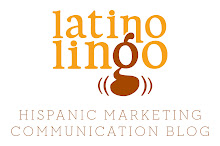Mas on Hispanic health communication
The Westchester (N.Y.) Business Journal has an article about the growth of Hispanics in the area (18 percent of the population) and the increased growth of Hispanics on the Internet. The article, written by Christina Occhipinti, is based on the recently released "Latinos Online" study from the Pew Internet & American Life Project and the Pew Hispanic Center in March 2007.
One of the organizations the writer highlights as moving on the Internet trend is Hudson Health Plan. Their Spanish-language website launched in April, according to Ted Herman, vice president of communications. He is quoted in the article as saying, "We wanted to be able to provide them (Hispanics) with access, whether they preferred to get that information in English or in the Spanish language. The idea is to make site as welcoming and accommodating to the profile of our membership.”
While I applaud their effort to try to communicate to the growing Hispanic base in the region, the mistake is solely focusing on language. Further, the link to the Spanish-language site on the English Language site reads, "Versión Española," which actually means Spain's version v. the version in Spanish. In other words, it's like saying the "Mexican Version" or the "Puerto Rican Verion."
That aside, the web site is essentially a translation of their English-language site. The challenge, as I've written about numerous times in this blog, is that communication to Hispanics transcends language. Especially in health communication. There are issues such as culture, religion, spirituality, machismo, marianismo, etc. that need to be addressed, regardless of language. I recently spoke at the New England Society of Health Care Communicators and my overall message was one of not focusing solely on language. That's the easy way, not the effective way. A direct translation does not address these or other issues that are often the larger barriers to effective health communication with Hispanics.
On a related note, L.A. Care Health Plan, the nation's largest public health plan, announced that they will launch a new advertising campaign this week targeting low-income Hispanic uninsured families. The campaign in Spanish is again a direct translation of the one in English. It shows people giving out oranges. I invite you to look at the campaign and explain to me how it specifically addresses the stated objective of targeting low income and uninsured Hispanic families. In my estimation, it's a generic campaign focused more on brand attributes of the health plan, and not specifically what it offers to low income and uninsured Hispanics.
The take away, again, is to ensure smart and effective communication that is culturally and linguistically relevant. Not just putting information in Spanish.
One of the organizations the writer highlights as moving on the Internet trend is Hudson Health Plan. Their Spanish-language website launched in April, according to Ted Herman, vice president of communications. He is quoted in the article as saying, "We wanted to be able to provide them (Hispanics) with access, whether they preferred to get that information in English or in the Spanish language. The idea is to make site as welcoming and accommodating to the profile of our membership.”
While I applaud their effort to try to communicate to the growing Hispanic base in the region, the mistake is solely focusing on language. Further, the link to the Spanish-language site on the English Language site reads, "Versión Española," which actually means Spain's version v. the version in Spanish. In other words, it's like saying the "Mexican Version" or the "Puerto Rican Verion."
That aside, the web site is essentially a translation of their English-language site. The challenge, as I've written about numerous times in this blog, is that communication to Hispanics transcends language. Especially in health communication. There are issues such as culture, religion, spirituality, machismo, marianismo, etc. that need to be addressed, regardless of language. I recently spoke at the New England Society of Health Care Communicators and my overall message was one of not focusing solely on language. That's the easy way, not the effective way. A direct translation does not address these or other issues that are often the larger barriers to effective health communication with Hispanics.
On a related note, L.A. Care Health Plan, the nation's largest public health plan, announced that they will launch a new advertising campaign this week targeting low-income Hispanic uninsured families. The campaign in Spanish is again a direct translation of the one in English. It shows people giving out oranges. I invite you to look at the campaign and explain to me how it specifically addresses the stated objective of targeting low income and uninsured Hispanic families. In my estimation, it's a generic campaign focused more on brand attributes of the health plan, and not specifically what it offers to low income and uninsured Hispanics.
The take away, again, is to ensure smart and effective communication that is culturally and linguistically relevant. Not just putting information in Spanish.

